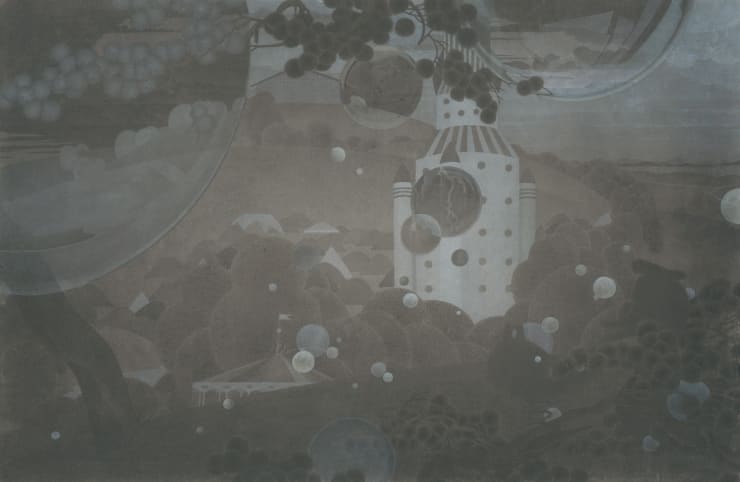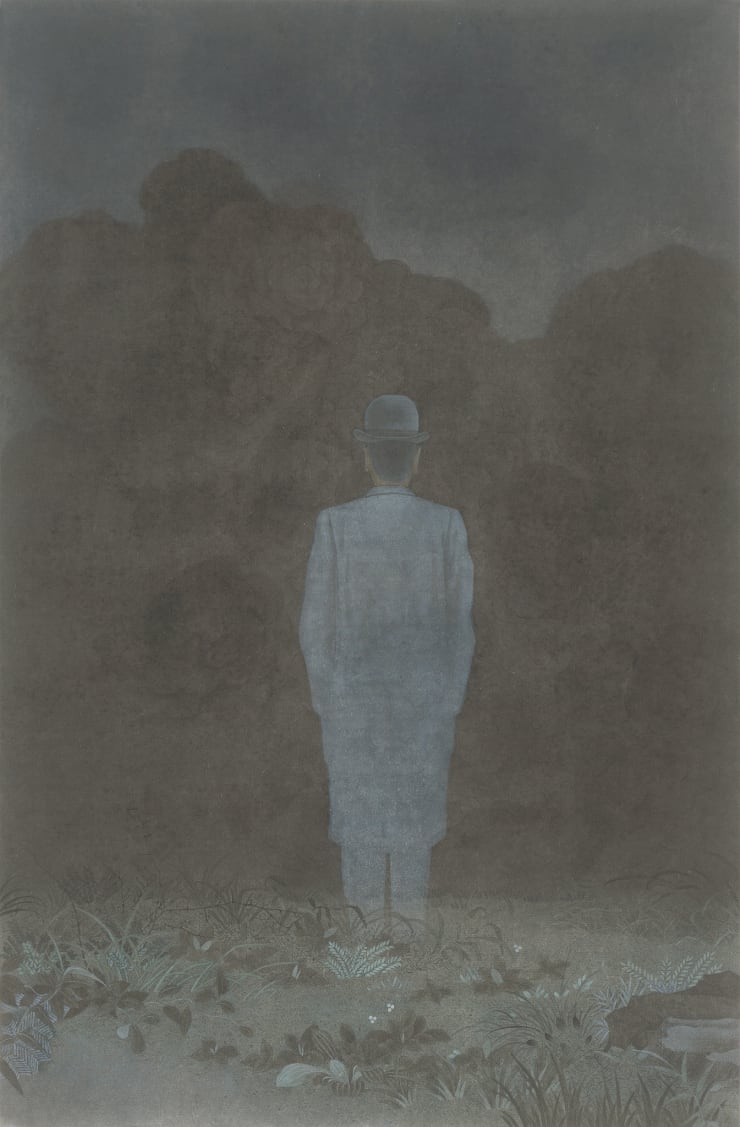The Resounding Chasm
Past exhibition
Présentation
Ora-Ora is pleased to announce a new solo show by acclaimed Beijing-based artist Xiao Xu. The title is The Resounding Chasm. Ora-Ora presents seven new artworks, all executed during or shortly before the onset of the pandemic, a period which the artist spent in China’s capital city of Beijing. In the midst of a public health emergency, there were few outlets to escape the seclusion of home. The artist explored Beijing’s parks, experiencing unexpected revelations and unforeseen psychological realizations which were the impetus for this show.
The title alludes to the idea of time as a fungible concept. The pandemic has intervened to slow, speed up or distort time within individual perception. Visualizing time as a river or landscape before him, the artist hears passions and emotions as echoes in its chasms. Employing humour and surrealist imagery to illustrate his realization, Xiao Xu calls to mind a line from Gong Zizhen, a poet of the Qing Dynasty: “Countless stars die, and the moon falls into the forest." The visit of the moon to earth becomes an illustration and metaphor for the suspension of normality and the artist’s embrace of the surreal and the pathetic fallacy.
Xiao Xu’s instantly recognizable signature style has won great acclaim from his peers and immense popularity with collectors. He works with ink on paper, employing an innovative layering method which creates a unique visual effect. By repeatedly adding ink colour to previously dry ink, he creates a rich texture-like depth. He is a maestro of darkness, forging a path of deep shadow, tipping the balance of chiaroscuro in favour of velvety midnight hues. Xiao Xu’s paintings harness the brush, ink and paper of classical times, pairing the past with a contemporary theatricality in his choice of subject, arrangement and inspiration.
In the words of Ora-Ora co-founder and CEO, Henrietta Tsui-Leung, “Xiao Xu is an artist with a reverence for classical technique, whose painting is highly contemporary in theme and subject. As we emerge from the shadow of the pandemic, The Resounding Chasm couldn’t be more topical. This is an exhibition which explores a world of darkness and shadow, and yet is anchored in self-knowledge and humanity.”
Œuvres
Vues de l'exposition







